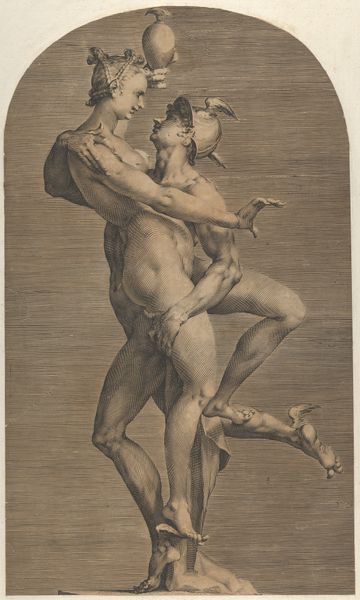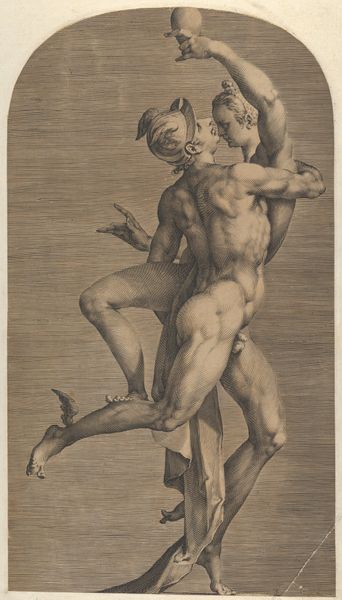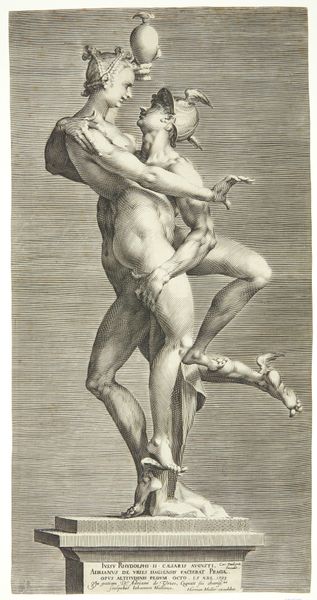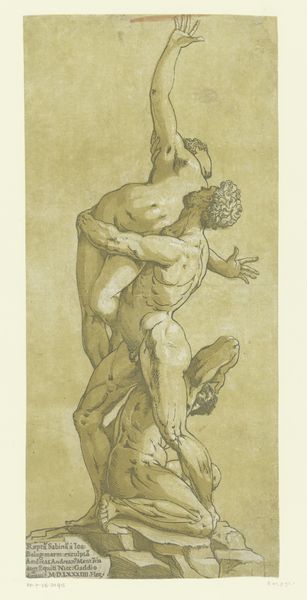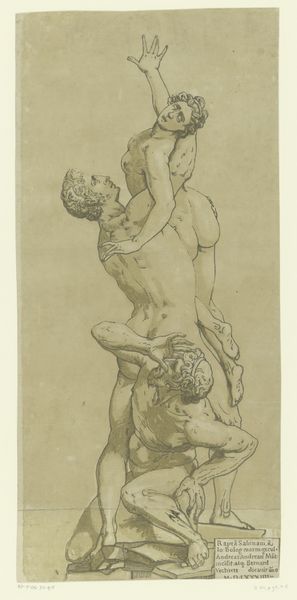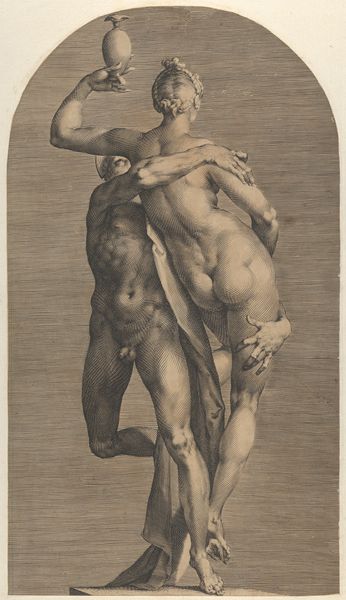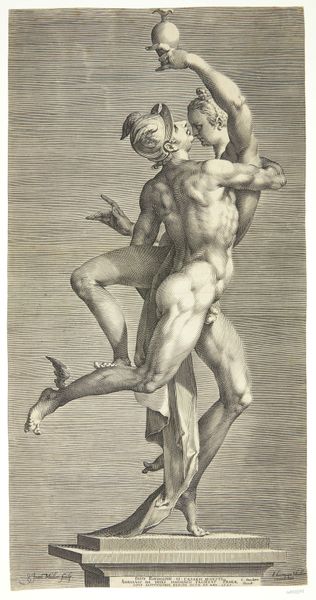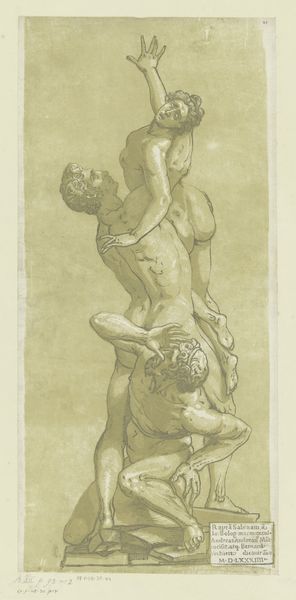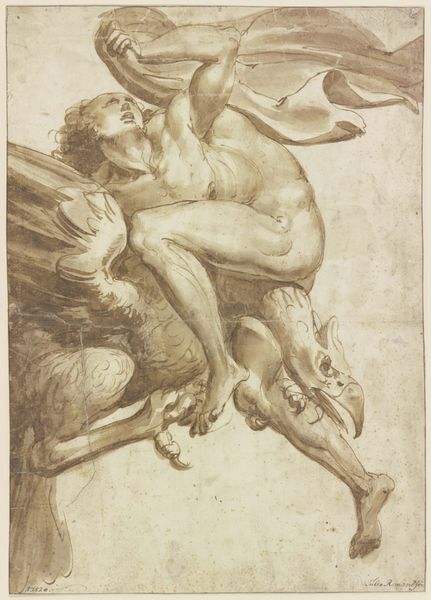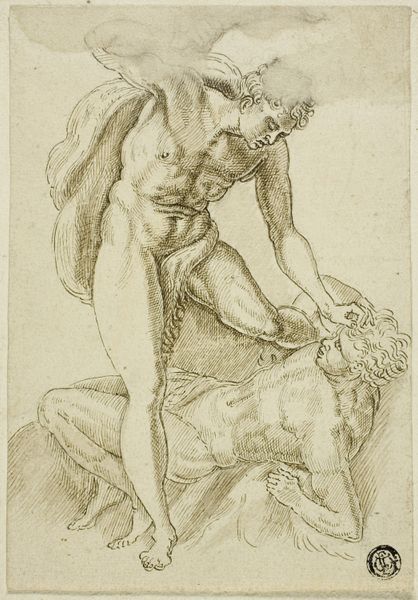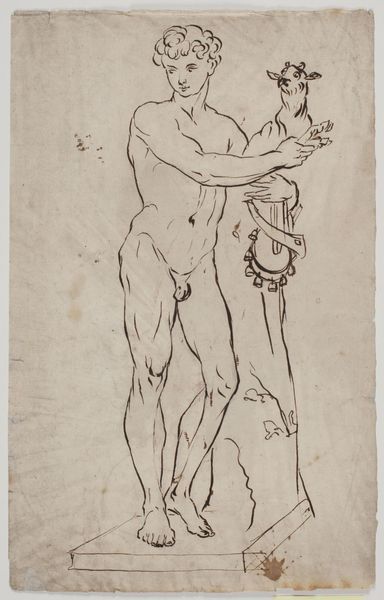
drawing, print, etching, intaglio
#
drawing
#
narrative-art
# print
#
etching
#
intaglio
#
mannerism
#
figuration
#
line
#
history-painting
#
male-nude
Dimensions: Sheet: 17 3/16 × 7 15/16 in. (43.7 × 20.2 cm)
Copyright: Public Domain
Curator: Immediately striking is the torsion, isn’t it? The upward thrust countered by that base figure anchored so firmly. It's Andrea Andreani’s “Rape of a Sabine Woman,” made around 1584, a chiaroscuro woodcut printed from multiple blocks. Editor: The title and that spiraling composition… it evokes such a primal image of violence. It almost feels ritualistic. The figures, although classically rendered, seem locked in some endless, anguished dance. Curator: Yes, "anguished" perfectly encapsulates the Mannerist aesthetic. Look at how Andreani utilizes line and form not for verisimilitude, but to amplify the drama. The exaggerated musculature, the precarious balance… everything is heightened for effect. The subject matter, of course, draws upon the foundational myth of Rome, with all its inherent conflicts. Editor: That specific moment, that act of abduction… It speaks volumes about power, desire, and the subjugation of women, themes that resonate across centuries. You know, this historical event and visual interpretation is, obviously, problematic. I also wonder, though, what did it mean in the context of its own time? Curator: Precisely. The Mannerist style itself was a reaction against the perceived perfection of the High Renaissance. Artists were striving for something more subjective, more emotionally charged. Here, the lack of idealization in the figures, the harsh contrasts in the printing… they all contribute to that sense of unease and dynamism. I read the artist as engaging in the intellectual discourse of the time about antiquity through its stylistic presentation. Editor: Perhaps it functions, on one level, as a cautionary tale, reminding viewers of the brutal origins upon which society is sometimes founded. These recurring themes throughout history, I am most fascinated by its symbolic density across multiple eras, offering always new understandings. Curator: Indeed. Whether as a historical document, a stylistic exercise, or a symbol of enduring power dynamics, it challenges our perspectives and prompts reflection about human form. Editor: This examination has deepened my interest in the symbols depicted within it. Thank you. Curator: And for me, a reminder of the continued possibilities for art’s intrinsic expressive capability.
Comments
No comments
Be the first to comment and join the conversation on the ultimate creative platform.
